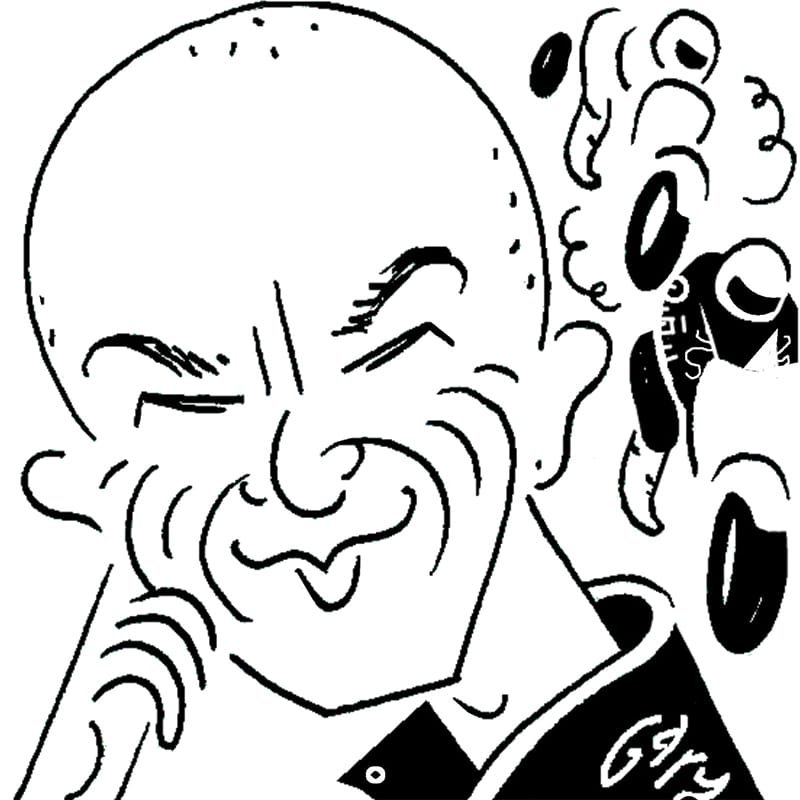'Argentina was Aprilia’s first MotoGP victory in four decades of trying': Mat Oxley
Three months ago Aleix Espargaró rode his Aprilia RS-GP to the company’s first MotoGP victory in four decades of trying, at the Argentine Grand Prix at Termas de Rio Hondo.
The success was the crowning chapter of a long story for the Italian manufacturer that began at the 1994 Spanish GP, where Aprilia debuted its first premier-class motorcycle.
Since then Aprilia, based in Noale near Venice, has been MotoGP’s perennial underdog, often finishing at the bottom of the constructors’ championship, including a clean sweep of last positions from 2016 to 2021.
That first MotoGP bike of 1994 was an over-bored 250cc twin, conceived to tackle the dominant 500cc fours, which were already struggling to use all their power around grand prix racing’s increasingly tight racetracks.
Aprilia’s theory went like this: its lighter, 410cc twin would achieve results thanks to its ability to corner faster than the heavier, unwieldier 500cc fours. Rider Loris Reggiani’s speed during qualifying for the RWS500’s Jerez debut seemed to support that theory – he started from the second row, just behind Kevin Schwantz and Mick Doohan.
Only one problem: as soon as the race started the faster 500 fours blasted past the little twin and Reggiani had no room to exploit his advantage in the corners. The RWS500 achieved several podiums in subsequent years but was withdrawn at the end of 2000, although not before Briton Jeremy McWilliams had once again proved its potential by taking pole at that year’s Australian GP.
Two years later Aprilia launched its first four-stroke MotoGP motorcycle, the RS Cube, the most technically advanced machine on the grid and the first to break the 200mph barrier, during the 2002 Italian GP. The Cube engine was conceived by Aprilia and Cosworth. It was the first MotoGP engine with pneumatic valves, ride-by-wire throttle and carbon clutch.
However, its power delivery was more suited to Formula 1 than MotoGP. After three years of average results the project was shelved when the giant Piaggio Group bought Aprilia.
A decade later Piaggio took Aprilia back into MotoGP. An all-new machine – the RS-GP – was powered by a 72-degree V4 four-stroke engine, despite the fact that Ducati and Honda were doing a lot of the winning at that time with their 90-degree V4s.
Espargaró signed for Aprilia in 2017 and has been there ever since, spending his first three seasons banging his head against a brick wall, or more literally often against the ground.
“The problem was that the engine had no torque at the bottom and it finished very early, at 17,000rpm,” says the 32-year-old Spaniard.
“The bike had good agility, but the engine made it very difficult to ride, especially at lowgrip tracks, where the super-tricky power delivery made it impossible.
“We worked a lot with the chassis, but all the problems came from the engine. There was always a lot of vibration, which gave a lot of chatter and made the bike nervous on the brakes. You had to be super-precise, so in the wet it was a nightmare.”
Finally, Piaggio realised it must go big or go home. The group increased its investment in Aprilia’s MotoGP project, hiring more engineers, as well as ex-Ferrari F1 man Massimo Rivola, who became project CEO, freeing chief engineer Romano Albesiano to focus on the motorcycle.
Aprilia’s year of revolution was 2020, when the narrow-angled V4 was replaced by a 90-degree V4, offering perfect balance and much-improved torque and negative-torque characteristics – important in MotoGP.
Of course, Covid nearly got in the way. The new RS-GP had never been run when the bikes were packed into their flight cases for 2020’s first pre-season tests at Sepang, Malaysia.
“I told the engineers, ‘This is the best bike you ever made’”
“Actually we couldn’t start the bike at Sepang because the starter didn’t have enough power to turn over the engine,” laughs Espargaró, who probably wasn’t laughing at the time. “So we had to close the garage door and start the bike using a scooter: full gas with the scooter’s tyre against the RS-GP’s tyre!
“I did three laps, came into the garage and I was crying. I told the engineers, ‘This is the best bike you ever made – it’s unbelievably good!’ Then 2020 was a bad year because of Covid, but the base of the bike was already great. And to think I had been considering retirement at the end of 2019, because there’d been no progress at all with the old bike.”
When the pandemic took hold MotoGP introduced cost-cutting rules, banning engine and aero upgrades, so Aprilia had to race the season with its prototype engine and aero.
Last year the RS-GP showed its true potential. Espargaró scored Aprilia’s first four-stroke MotoGP podium at Silverstone and after another winter of development helped the bike take another significant step forward.
“Now I have a good torque curve, plus the [downforce] aero helps me put the power to the ground without spinning or wheelies,” explains Espargaró.
“Aprilia spent a lot of money in the wind tunnel last year and it was worth it because the bike is fast in sixth gear but the downforce for turning is also very good.”
Espargaró recently signed a new two-year contract with Aprilia, alongside countryman Maverick Viñales. And the company will have four bikes on the grid in 2023, with the RNF team leasing RS-GPs for its two riders.
Mat Oxley has covered motorcycle racing for many years – and also has the distinction of being an Isle of Man TT winner
Follow Mat on Twitter @matoxley





































































































































































































